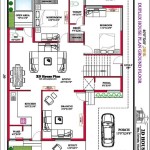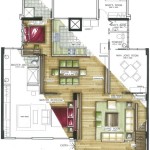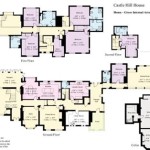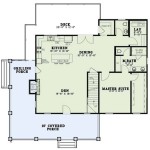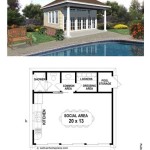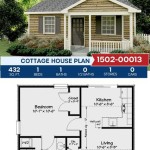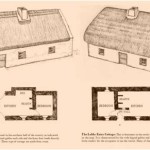```html
20-30 Best House Plan Ideas
House plans are fundamental blueprints that dictate the structure, layout, and aesthetic of a residential dwelling. Selecting the right house plan is a crucial decision, influencing long-term livability, cost-effectiveness, and overall satisfaction with a home. The vast array of available options can be overwhelming, necessitating a systematic approach to identifying the ideal plan. This article explores a range of house plan concepts, offering insights into their features, suitability, and potential advantages for different homeowner needs and preferences.
The concept of "best" is inherently subjective, varying based on individual priorities and circumstances. Factors such as lot size, budget, lifestyle, family size, and desired architectural style all play a significant role in determining the optimal house plan. Considerations must extend beyond mere aesthetics, encompassing functional considerations like energy efficiency, accessibility, and future adaptability.
Factors Influencing House Plan Selection
Numerous factors influence the selection of an appropriate house plan. A comprehensive assessment of these factors is essential to avoid costly mistakes and ensure long-term satisfaction with the final design. Ignoring these considerations can lead to significant challenges during construction and subsequent occupancy.
Lot Size and Orientation: The size and shape of the building lot significantly constrain the type of house plan that can be accommodated. Narrow lots necessitate vertical designs or specific adaptation of traditional layouts. Lot orientation relative to the sun impacts natural lighting and heating, influencing window placement and overall energy efficiency. South-facing windows generally maximize solar gain in colder climates, while minimizing exposure to direct sunlight during peak summer hours can reduce cooling costs.
Budget: The available budget is a primary determinant of the size and complexity of the house plan. Elaborate designs with intricate details and high-end materials will inevitably increase construction costs. It's crucial to establish a realistic budget early in the planning process and select a plan that aligns with financial constraints. Cost-effective solutions include simpler designs, efficient space utilization, and strategic selection of construction materials.
Lifestyle and Family Size: The intended occupants' lifestyle and family size are critical considerations. Larger families require more bedrooms and living space, while individuals prioritizing outdoor living may favor plans with expansive decks or patios. Homeowners who frequently entertain guests may benefit from open-concept designs and dedicated entertainment areas. The age and mobility of family members also influence accessibility requirements, potentially necessitating features like ramps, wider doorways, and single-story layouts.
Architectural Style: Personal preferences regarding architectural style play a significant role in house plan selection. Common styles include ranch, contemporary, traditional, craftsman, and modern. Each style is characterized by distinct features and aesthetic qualities. Choosing a style that complements the surrounding neighborhood and reflects individual tastes enhances curb appeal and personal satisfaction.
Examining a Spectrum of House Plan Concepts
Exploring a diverse range of house plan concepts can provide valuable insights and inspiration for homeowners embarking on the design process. This section examines several distinct house plan types, highlighting their key features and potential advantages.
Ranch Style: Ranch-style homes are typically single-story structures characterized by a low-pitched roof, horizontal layout, and attached garage. They are well-suited for individuals seeking ease of access and minimal stairs. Ranch homes often feature open floor plans and generous outdoor living spaces, making them ideal for those who enjoy entertaining. Their simple design lends itself to affordability and ease of maintenance. However, ranch homes can require a larger lot to accommodate the horizontal footprint.
Two-Story Homes: Two-story homes offer a greater square footage within a smaller footprint compared to ranch-style homes. This makes them suitable for properties with limited lot size. Two-story homes typically feature bedrooms on the upper level and living areas on the main level, providing separation of living and sleeping spaces. They can be more energy-efficient than single-story homes due to reduced roof exposure. However, stairs can pose a challenge for individuals with mobility issues.
Modern Farmhouse: The modern farmhouse style blends traditional farmhouse elements with contemporary design features. These homes often incorporate natural materials like wood and stone, combined with clean lines and minimalist aesthetics. Modern farmhouses typically feature open floor plans, large windows, and ample natural light. They offer a balance of rustic charm and modern convenience.
Contemporary Style: Contemporary homes are characterized by clean lines, minimalist design, and an emphasis on natural light. They often incorporate large windows, open floor plans, and innovative materials. Contemporary homes prioritize functionality and sustainability, often incorporating energy-efficient features and green building practices. They may feature flat or low-pitched roofs and a focus on indoor-outdoor living.
Craftsman Style: Craftsman homes are known for their handcrafted details, natural materials, and emphasis on quality workmanship. They typically feature low-pitched roofs, wide eaves, and exposed rafters. Craftsman homes often incorporate features like built-in cabinetry, fireplaces, and front porches. They offer a warm and inviting aesthetic with a focus on handcrafted details.
Cottage Style: Cottage-style homes are characterized by their cozy and charming appearance. They often feature small footprints, steep roofs, and dormer windows. Cottage homes typically incorporate natural materials like wood and stone, combined with whimsical details. They offer a sense of warmth and intimacy, often featuring gardens and outdoor living spaces.
Bungalow Style: Bungalow homes are typically single-story or one-and-a-half-story structures with low-pitched roofs and wide eaves. They often feature front porches and open floor plans. Bungalows are known for their practicality and affordability, making them a popular choice for first-time homebuyers. They offer a comfortable and functional living space with a focus on simplicity.
Open Concept Plans: Open concept plans minimize the number of walls separating living areas, creating a seamless flow between the kitchen, dining area, and living room. This design promotes social interaction and creates a sense of spaciousness. Open concept plans are well-suited for entertaining and accommodating large gatherings. However, they may require careful consideration of noise control and furniture placement.
Split-Level Plans: Split-level homes feature multiple levels connected by short flights of stairs. This design is often used to adapt to sloping lots. Split-level homes typically offer separate living spaces for different activities, providing privacy and functionality. However, the multiple levels can be challenging for individuals with mobility issues.
Key Considerations for Energy Efficiency
Energy efficiency has become an increasingly important consideration in house plan selection. Implementing energy-efficient design principles and technologies can significantly reduce energy consumption and lower utility bills. This section outlines key considerations for maximizing energy efficiency in a house plan.
Insulation: Adequate insulation is crucial for minimizing heat loss in winter and heat gain in summer. Proper insulation in walls, roofs, and floors can significantly reduce energy consumption. Different types of insulation offer varying levels of thermal resistance, measured by R-value. Selecting the appropriate insulation type and R-value for the local climate is essential.
Window Placement and Glazing: The placement and type of windows can significantly impact energy efficiency. Strategically positioning windows to maximize natural light and solar gain can reduce the need for artificial lighting and heating. Low-E (low-emissivity) coatings on window glass can reduce heat transfer, improving energy efficiency. Double-pane or triple-pane windows provide better insulation than single-pane windows.
Orientation and Shading: Orienting the house to maximize solar gain in winter and minimize solar gain in summer can significantly reduce energy consumption. Overhangs, awnings, and landscaping can provide shading to reduce heat gain during peak summer hours. Planting trees strategically can also provide shade and reduce cooling costs.
HVAC Systems: Selecting an energy-efficient HVAC (heating, ventilation, and air conditioning) system is crucial for minimizing energy consumption. High-efficiency furnaces, air conditioners, and heat pumps can significantly reduce utility bills. Programmable thermostats can help regulate temperature and reduce energy waste.
Renewable Energy: Incorporating renewable energy sources like solar panels can further reduce energy consumption and environmental impact. Solar panels can generate electricity or heat water, reducing reliance on fossil fuels. Government incentives and tax credits may be available for installing renewable energy systems.
Choosing the optimal house plan involves a careful consideration of many factors. The plans above offer an overview of popular choices with strengths and weaknesses to consider. Taking the time to find the right plan is an investment in the future and an investment in creating a comfortable and functional home that meets both short term and long term needs.
```
20x30 Best North Facing House Plan With Vastu Houseplansdaily

20 X 30 Small 3 Bed Room House Plan Ii Ghar Ka Naksha 600 Sqft Design

20 X30 South Facing House Plan With Parking Vastu 2bhk

20x30 Best House Plan And Design Crazy3drender

2bhk West Facing Best Plan 20x30 600sft

20 X 30 House Plan 20x30 Ka Ghar Naksha Design 600 Sqft
What Are The Best House Plan For A Plot Of Size 20 50 Feet Quora

20x30 3bhk 3d House Plan 20 X30 Ground Floor

Best Small House Designs 9x6 Meter 30x20 Feet Design Plan

Fantastic House Plan Ideas For Your Area

